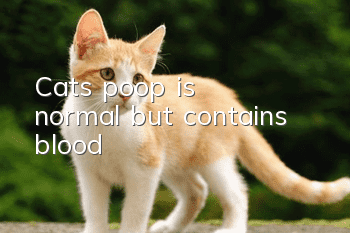Introduction to the historical origin and pedigree of pet Persian cats

Persian cat (Persian) is the most common long-haired cat. It is a breed born in 1860 after more than 100 years of selective breeding in the UK, based on the Afghan long-haired cat and the Turkish Angora long-haired cat. Persian cats have a lovely face, long and gorgeous back hair, and elegant manners. Therefore, they are known as the "Prince of Cats" and "Princess". They are the most favorite purebred cats among cat lovers in the world. occupies an extremely important position. Persian cats are extremely popular around the world, and cat owners are proud to own a Persian cat. So do you know the history of Persian cats?
Persian Cat
Origin
The Persian cat originated in Persia (today’s Iran) and first appeared in Britain in the 16th century. It is generally believed that the Italian traveler Pietro Della Valle first introduced the Persian cat to Europe. It has been very popular since it appeared, and there are more and more varieties after breeding. But the long-haired Persian cat breed seen today was produced in the 19th century, and its exact origin is unknown. The Persian cat is actually a breed born in 1860 after more than 100 years of selective breeding in the UK, based on the native long-haired cats of Afghanistan and the Angora long-haired cats of Turkey or Armenia. Persian cats have a lovely face, long and gorgeous back hair, and elegant manners. Therefore, they are known as the "Prince of Cats" and "Princess" and are therefore very valuable. A purebred Persian cat can cost thousands of dollars and is one of the most popular cats among cat lovers in the world.
Evolutionary History
Dogs were initially able to adapt to human life because their social behavior matched that of humans in many ways. Cats are different from humans. They are solitary hunting animals with fixed territories, and most of them are active at night. However, it is the hunting behavior of cats that brings them into contact with the human environment in the first place, and their strong instinct to protect their territory makes them Driving them to keep appearing in the same places. The history of domesticated cats is much later than that of dogs. This period may not be earlier than the seventh millennium BC, when agriculture flourished and a "crescent-shaped rice granary" zone was formed in the Middle East. Homes, barns, and grain stores provided new habitats for rodents and other small mammals, ideal prey for small feral cats.
From the beginning, humans and cats had a mutually beneficial relationship: cats gained a rich source of food, and humans were spared the trouble of pesky rodents. Initially, the presence of these feral cats may not be accepted or even encouraged by humans, who throw in some food from time to time. Just like wolves, some of the more tamed wild cats were gradually absorbed into human society, resulting in the earliest semi-domesticated cat groups. Domestic cats are almost certainly descended from small wild cats found throughout Europe, Africa and South Asia. Within this vast area, countless wild cat subpopulations have evolved based on local environmental and climatic conditions. Their appearances are different. European wild cats living in the north are stout, with short ears and thick fur; African wild cats are more slender, with long ears and long legs; while Asian wild cats living in the south are small and spotted.
The original ancestor of domestic cats is likely to be the African wild cat, because the African wild cat is only slightly larger than the domestic cat and has a tamer temperament than other wild cats. African wild cats often appear near human settlements and are easily domesticated, and are often kept as pets for local residents. After domesticated cats were brought to various parts of the world, they may have mated with local wild cats and became the ancestors of modern domestic cats in different regions. The fur texture of European domestic cats with dark markings combines the characteristics of European wild cats and African wild cats, while the spots on domestic cats living in India indicate that their ancestors are related to Asian wild cats. Breeds resulting from crosses between domestic cats and other wild cat breeds, such as jungle cats, are unlikely to have a significant impact on the mainstream domestic cat breeds.
After thousands of generations of reproduction, physiological changes caused by domestication have also occurred in cats, which are similar to the changes in dogs. These include smaller body size, shortened claws, reduced brain and cranial cavity volume, extended posture of the ears and tail, and changes in the color and texture of the fur. However, unlike dogs, cats maintain a large degree of independence in human society and therefore rarely develop certain behavioral characteristics required by humans due to selective external pressure. As a result, domestic cats have changed little in appearance from their wild cat ancestors and are difficult to distinguish in early archaeological finds. Cat remains have been found near various prehistoric human sites, including Neolithic sites in Israel about 9,000 years ago and Indus Valley sites in Pakistan 4,000 years ago. However, the remains are likely those of wild cats that were killed for their fur or meat. Interestingly, the remains of cats and rats from 8,000 years ago were also discovered on the Mediterranean island of Cyprus. They could only have been brought to the island by human immigrants. Although the cats may not have been fully domesticated, they were intentionally brought to the island to deal with the rat infestation. In Egyptian mythology cats were the guardians of the underworld. It hunts mice, birds, rabbits, etc. and is of great help to humans.
Pedage introduction
There are different opinions about the origin of the Persian cat. The more unified theory is that it is based on the indigenous long-haired cats of Afghanistan and cross-bred with the Angora cats in Turkey or Armenia. Persian cats have a long history. They were introduced to the United Kingdom via France in the 16th century, brought to Italy in the 18th century, and spread to the United States from Europe in the 19th century. It is said that Queen Victoria had two blue Persian cats, and the Prince of Wales (Edward VII)It was highly praised at cat shows. From then on, the Persian cat's reputation grew and the public became attracted to it.
- It is important to take care of your cat’s eyes regularly. What special situations should you pay attention to?
- What are the characteristics of the Turkish Van Cat?
- How to stop cats from holding grudges?
- What should I do if my cat likes to drink toilet water?
- How to care for a pregnant female cat
- Will cat deworming collars poison cats?
- Why do cats urinate randomly? What are the reasons why cats urinate randomly?
- Is cat plague contagious?
- Are Siberian cats clingy?
- Don’t underestimate your cat’s whiskers, they can serve these functions!



